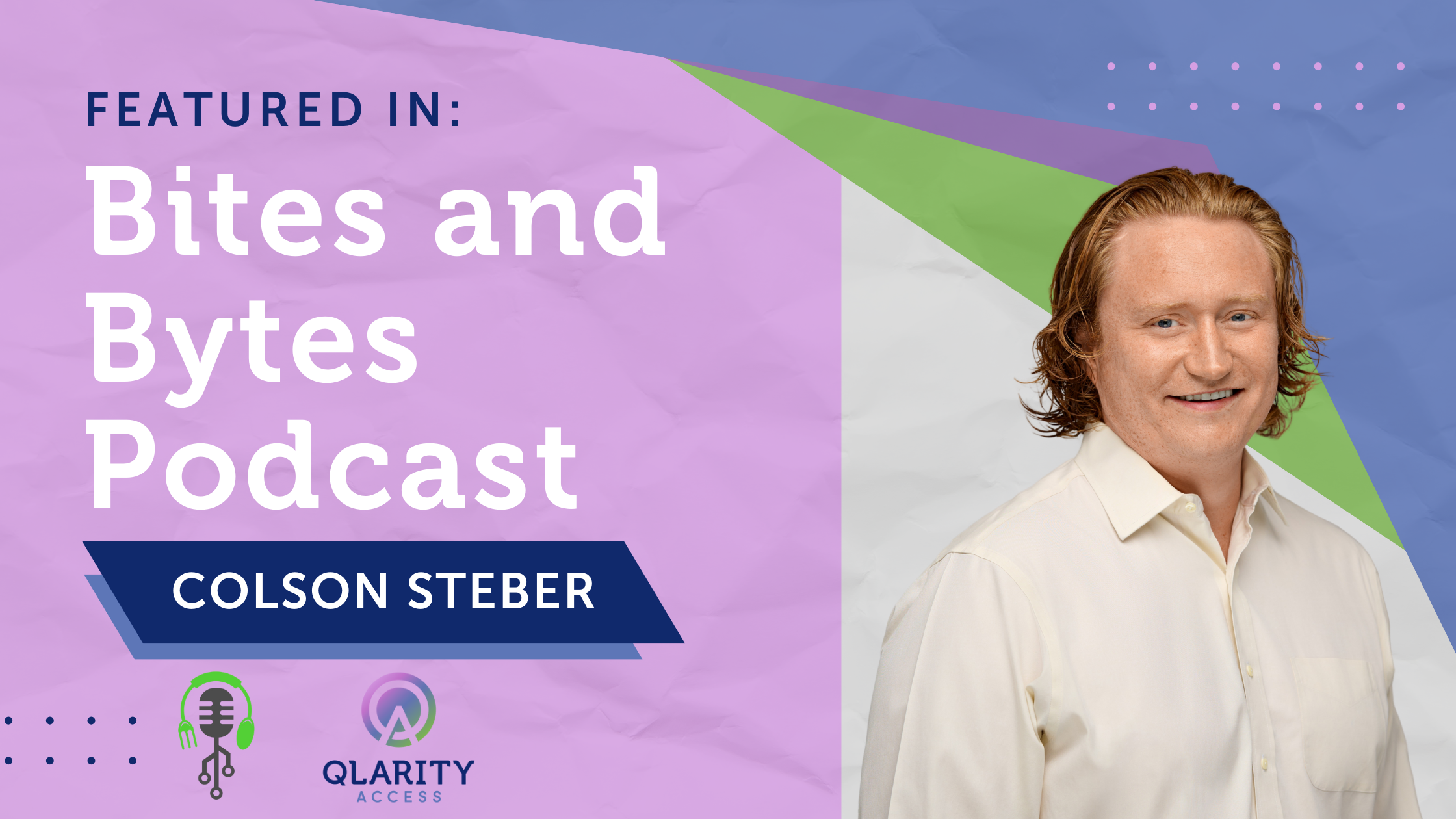
Featured In: Bites and Bytes with Kristin Demoranville
Colson Steber, Co-CEO of Qlarity Access and Ag Access, joined Kristin Demoranville on the Bites and Bytes podcast to talk about how our nearly two decades of experience in agricultural market research shed light on what farmers truly need and how technology is shaping the agricultural landscape.
The Human Element Driving AgTech Adoption
Colson passionately articulated that successful AgTech adoption isn't just about the technology itself, but about how it integrates into the farmer's existing world. He stressed the importance of empathy and building trust before simply "throwing more tech out." It’s crucial to understand the farmer's daily routines, their existing knowledge, and how new technologies can genuinely make their lives easier, not more complicated. This moves beyond merely pushing products and instead focuses on creating solutions that genuinely resonate with the real needs of those on the ground.
The agricultural sector has seen hundreds of technology solutions emerge, but the most impactful ones are those that truly serve the farmer. Colson noted one successful change in a significant shift in farming over the past 10 to 15 years, particularly with precision farming. The ability to apply fertilizers and crop protection chemicals at the most granular level, down to the individual plant, has created incredible efficiency and fundamentally changed how production happens.
Navigating Legacy and Embracing Innovation
Agriculture is an industry rich with tradition and inherited knowledge. While innovation is essential, Colson pointed out the unique challenge of balancing new technologies with the immense value of legacy practices. Most farms are still family-owned, often with older generations working alongside younger ones. This intergenerational dynamic means that new technology must be intuitive and demonstrate clear value.
Colson highlighted the immense financial pressures on farmers today. Starting a farm can involve millions in equipment and high acreage costs, with operations often financed to their limit. This puts farmers in an "incredibly protective state" where they are hesitant to deviate from proven methods or anything outside of established support systems like the Farm Bill. As Colson explained, for outside AgTech companies, it's not enough to say a new product will increase yield; there must be a deep understanding that "there's no time and headspace in a farmer's hand to deal with one more application or one more thing to weave into the 17 that they're already used."
Trust as the Ultimate Technology
Perhaps one of the most profound points Colson made was the foundational role of trust. In an industry built on relationships, trust is the bedrock upon which any new venture must be built. Without it, even the most groundbreaking technology will struggle to gain traction.
Colson emphasized the need for transparent communication, consistent follow-through, and genuinely listening to farmer feedback. Younger farmers, now in their 30s and 40s, approach relationships with a business mindset, expecting real service delivery and value. They won't stick with an insurance agent just because their father did for 50 years; there has to be demonstrated value.
Farmers are also powerful influencers within their communities. "They massively influence each other," Colson shared, explaining that there is often "so much judgment about doing the new thing." This social pressure means that successful adoption often requires a gradual, community-driven approach where the benefits are clearly visible and vouched for by peers.
The Future: Sustainable Resilience
Looking ahead, Colson identified sustainability as a prevailing theme, though with a crucial distinction between corporate and farmer perspectives. Farmers view sustainability in terms of their family's operation, their land's ability to produce, and long-term viability. Corporations, and even consumers, often focus on broader environmental goals. To achieve true change, the needs of the farmer must be met.
Colson offered an example of an irrigation company in California: switching workers from traditional hosing to more efficient drip lines, even with proven effectiveness, is "still massive" because the worker needs a "sure thing" and the existing practice has always worked. The future will likely bring "immensely increased knowledge of food sourcing and managing through an entire blockchain management of food sourcing," leading to greater transparency from farm to table.
Ultimately, Colson celebrated the inherent resilience of farmers. "We need farmers to be the influence because they're the ones that put resilience into the system. They're the ones that when the problems arise, they don't take no for an answer, they solve it." This underscores that connecting technology with the human element and their problem-solving nature is key to the future of agriculture.
Listen to the full podcast here:
.png?width=352&name=Qualitative%20Research%20Design%20Methods%20%26%20Appropriate%20Uses%20(January%202017).png)

